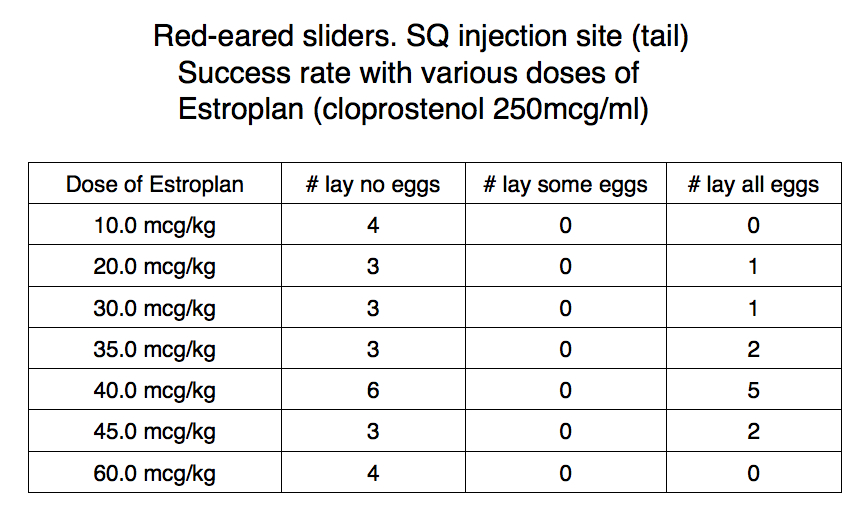Discovering the importance of prostaglandin F2 alpha
Carbetocin is a long acting analogue of oxytocin. It was difficult to obtain at the time we used it but it was worth the effort because we had an expectation that it would be much more effective than oxytocin. As the table below shows that was not the case. It had almost no effect at all!
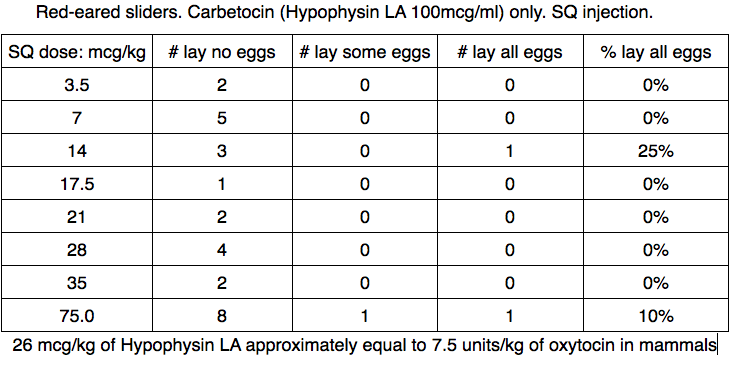
But, when we combined the carbetocin with Lutalyse, the results were dramatic. The table below illustrates this. When carbetocin was combined with 1.5 mg/kg of Lutalyse the success rate rose to 100% in 26 cases! We were puzzled by this and then “the light came on” and we realized that it was the Lutalyse alone that was so effective.
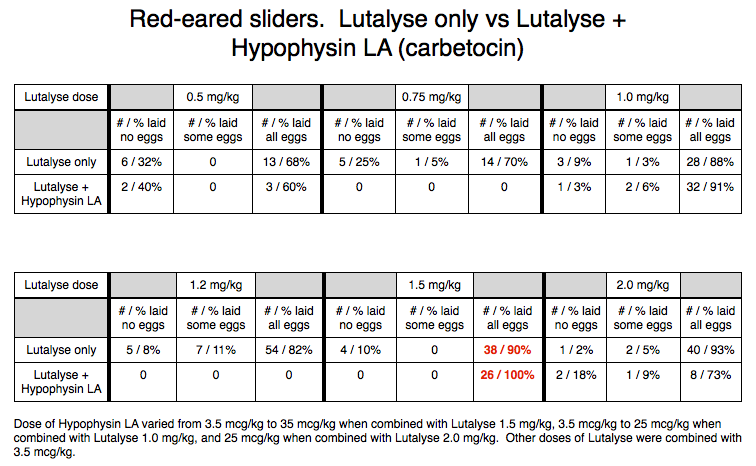
Consequently we began to trial Lutalyse given alone by subq injection at the base of the tail. The next table shows how successful this was; a 94% success rate with a dose of 1.5 mg/kg.
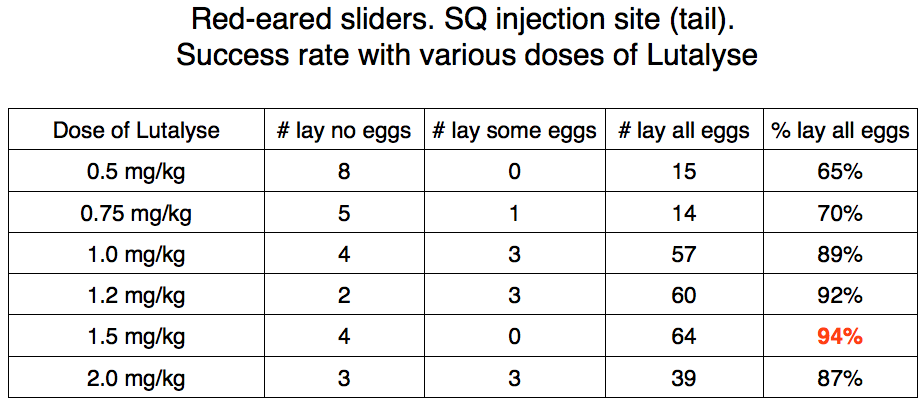
The figure below converts that data to graph form. Since we could only induce 20 RES per day these results reflect close to 15 days of work over several years. The inductions were spread over several years to eliminate the possibility the results were influenced by any unique weather conditions or collection variations.
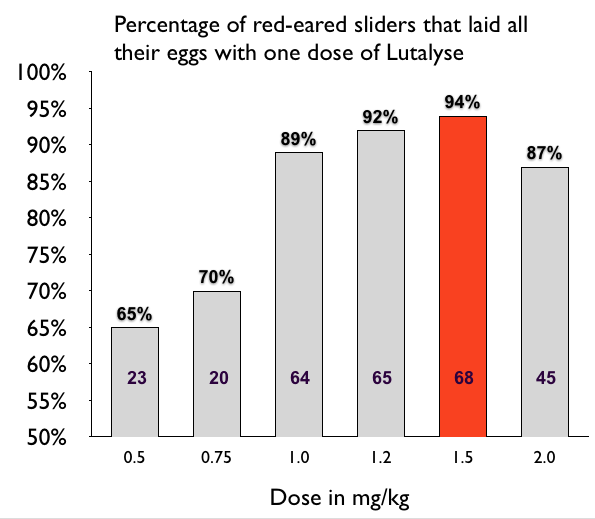
We were so surprised by these outcomes that we decided to run another series of oxytocin only inductions using the same subq injection site (by the tail) at the same time. The outcome is shown on the table below and was essentially identical to previous results using only oxytocin with a success rate under 50%.
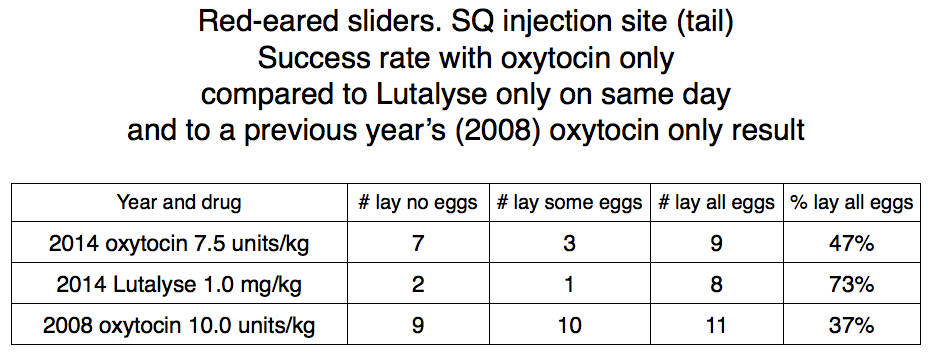
The following figure is a summary of all the work up until that point. Notice the dramatic difference in the success rate between oxytocin only and Lutalyse only. Also note that the addition of oxytocin actually reduced the success rate of Lutalyse!
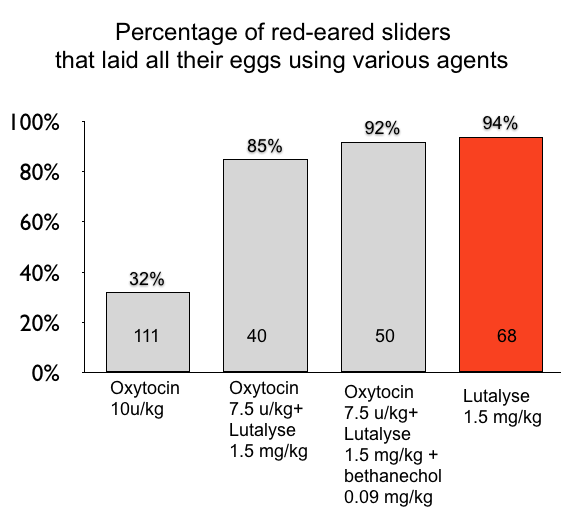
Prostaglandin F2-alpha is available as several analogues. We had been using Lutalyse, a brand name for dinoprost tromethamine. After realizing how effective Lutalyse was we decided to try another analogue of PGF-2. We chose Estroplan (cloprostenol sodium) to experiment with. We realized that it would not be easy to exceed a 94% success rate and, indeed, it would be difficult to discern a significant difference without inducing large numbers of animals. But we need not have worried about that issue because, as the table illustrates, Estroplan was much less effective.
